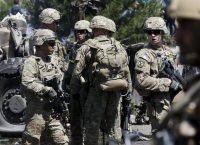
Ukraine remains stronger than you might think
Two years since Russia invaded Ukraine and 10 since Vladimir Putin seized Crimea, the war is at a difficult standstill — not least because of wavering U.S. support. If Congress cuts off support, Ukraine could well collapse later this year. Yet Ukraine remains strong in many ways. It has continued to stymie the Kremlin’s greatest ambitions for taking over the country. While the going is tough today, there is no cause for fatalism.
Much has been made of Ukraine’s disappointing 2023 counteroffensive. But given the strength of defenses on both sides, its failure was no huge surprise. Defense is simply stronger than offense at this stage of the war and, because of this, Ukraine might be able to hang on to most or all of the 82 percent of the pre-2014 territory it now holds, even with constrained military supplies.… Seguir leyendo »









